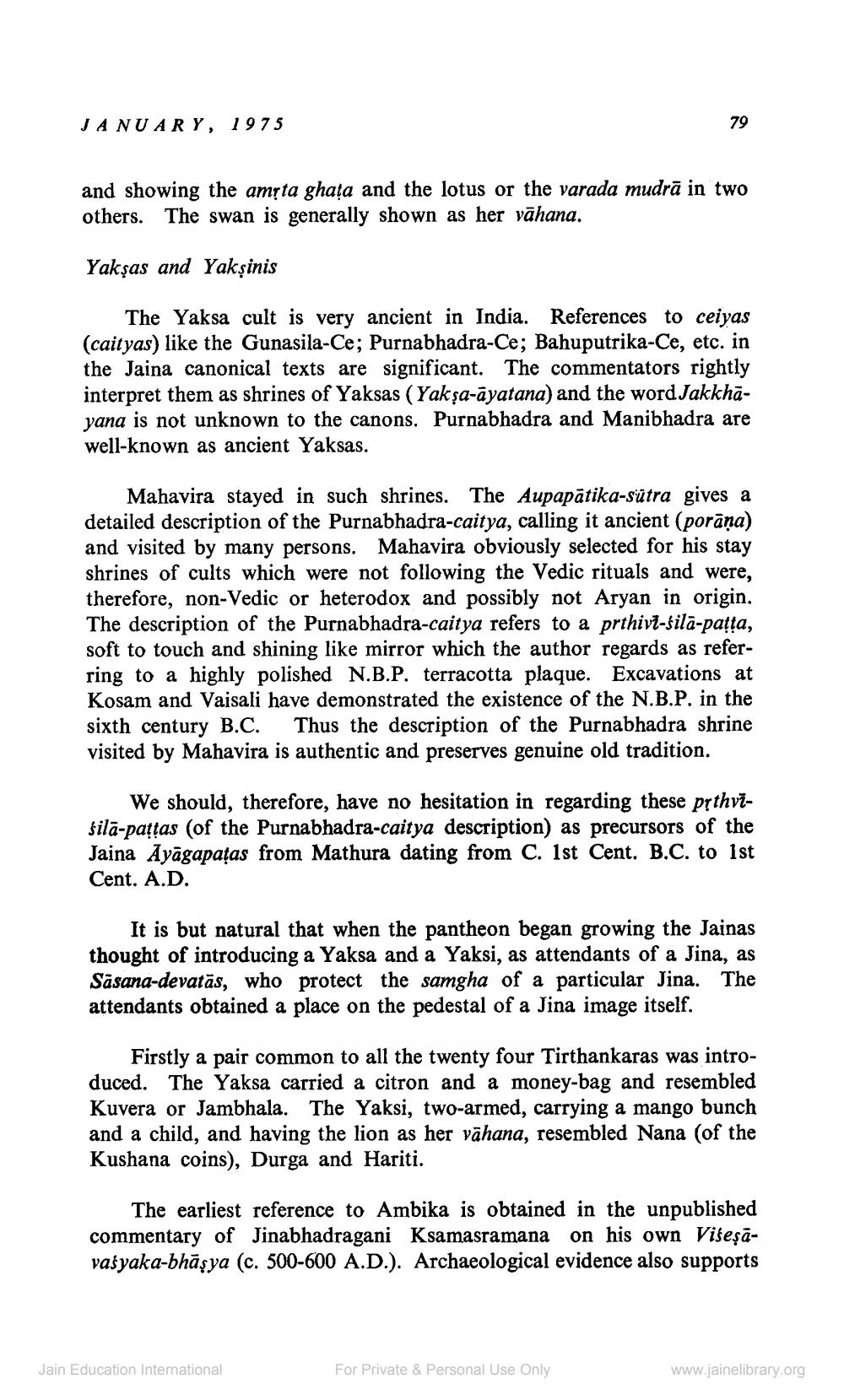________________
JANUARY, 1975
and showing the amrta ghata and the lotus or the varada mudrā in two others. The swan is generally shown as her vāhana.
Yakşas and Yaksinis
The Yaksa cult is very ancient in India. References to ceiyas (caityas) like the Gunasila-Ce; Purnabhadra-Ce; Bahuputrika-Ce, etc. in the Jaina canonical texts are significant. The commentators rightly interpret them as shrines of Yaksas (Yak şa-āyatana) and the word Jakkhāyana is not unknown to the canons. Purnabhadra and Manibhadra are well-known as ancient Yaksas.
Mahavira stayed in such shrines. The Aupapātika-sütra gives a detailed description of the Purnabhadra-caitya, calling it ancient (porāna) and visited by many persons. Mahavira obviously selected for his stay shrines of cults which were not following the Vedic rituals and were, therefore, non-Vedic or heterodox and possibly not Aryan in origin. The description of the Purnabhadra-caitya refers to a prthivi-silä-patta, soft to touch and shining like mirror which the author regards as referring to a highly polished N.B.P. terracotta plaque. Excavations at Kosam and Vaisali have demonstrated the existence of the N.B.P. in the sixth century B.C. Thus the description of the Purnabhadra shrine visited by Mahavira is authentic and preserves genuine old tradition.
We should, therefore, have no hesitation in regarding these prthvžšila-pattas (of the Purnabhadra-caitya description) as precursors of the Jaina Ayāgapațas from Mathura dating from C. 1st Cent. B.C. to 1st Cent. A.D.
It is but natural that when the pantheon began growing the Jainas thought of introducing a Yaksa and a Yaksi, as attendants of a Jina, as Sasana-devatās, who protect the samgha of a particular Jina. The attendants obtained a place on the pedestal of a Jina image itself.
Firstly a pair common to all the twenty four Tirthankaras was introduced. The Yaksa carried a citron and a money-bag and resembled Kuvera or Jambhala. The Yaksi, two-armed, carrying a mango bunch and a child, and having the lion as her vāhana, resembled Nana (of the Kushana coins), Durga and Hariti.
The earliest reference to Ambika is obtained in the unpublished commentary of Jinabhadragani Ksamasramana on his own Viseşāvašyaka-bhāşya (c. 500-600 A.D.). Archaeological evidence also supports
Jain Education International
For Private & Personal Use Only
www.jainelibrary.org




